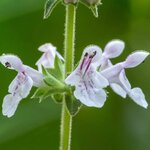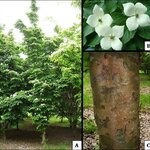Ecology & Zoology

The jellyfish highway.
By Stefano Piraino, University of Salento and Bella Galil, Israel Oceanographic and Limnological Research
For a month or two every summer, beaches across the south-eastern Mediterranean might be packed but the inviting seas remain suspiciously empty. It’s jellyfish season, and the “nomads” are out in force. Bathers avoid the sea while the swarm is offshore; their stings are painful and may last weeks, and one is likely to feel a burning sensation even without touching the creature.
Yet the nomad jellyfish (Rhopilema nomadica) is but one of more than 350 marine invasive…

The fungal disease known as white-nose syndrome has spread to bat colonies throughout eastern North America over the past few years, causing bat populations to crash and leading to various claims about what to blame for it.
But there is no magic bullet, finds a new study, because it is related to seasonal dynamics of infection and transmission too.
Writing in Proceedings of the Royal Society B, the researchers note that during the winter, when the bats are hibernating, the fungus can infect nearly every bat in a colony. Bats that survive the winter are able to clear the infection during…

For a short window, it appeared that bees were dying off. Environmentalist were quick to blame a new kind of pesticide, Neonicotinoids, known in short form as neonics, but then it turned out that the die-offs were in just one geographical area, which would not be the case if it were due to a pesticide.
Instead, it was likely a combination of environmental changes and perhaps a different sort of pest may try to kill them in the future; the exotic parasite Nosema ceranae and its original native relative Nosema apis. The exotic honey bee parasite may become more common not only due to its…

Sometimes you don't need to travel to the unexplored corners of the globe to discover a new species of plant. Sometimes they can be really close to home, you just have to spend 40 years of your life looking.
University of South Carolina
Professor John Nelson and alumnus Douglas Rayner have founds just such a new species close to home and they have dubbed it Stachys caroliniana, a new example of what is commonly called a hedge-nettle or woundwort.
And rarity is unusual among S. caroliniana's closest relatives. There are about 300 species in the genus Stachys, according to Nelson, the curator…

Flowering dogwood (Cornus florida), kousa dogwood (Cornus kousa) and various genetically modified relatives are the most popular and economically significant members of the genus Cornus in the nursery and landscape industries. These deciduous trees are highly valued for their spring display of pink, red, or white bracts, brilliant red fall foliage, and exfoliating bark and in the US sales of dogwoods account for more than $30 million dollars each year.
But they have been in peril. Flowering dogwoods were severely affected by dogwood anthracnose and powdery mildew but 20 years ago science…

How has domestication humbled house cats? Moyan Brenn/Flickr, CC BY-ND
By Bryonie Scott, The Conversation
House cats are a great source of companionship for many people – 3 million cats are kept as pets in Australia. Now thanks to research published in the Proceedings of the National Academy of Science today, we understand the genetics behind some of the traits that make them such good pets, such as docility and affection.
While it seems cats have been in close contact with humans for around 9,000 years, it is only in the past 200 years or so that we have produced the domesticated breed we…

When is a cat not a cat? Biodiversity Heritage Library (adapted), CC BY
By Ben Holt, Imperial College London and Knud Andreas Jønsson, Imperial College London
A cat is, of course, a cat. Lions are cats too, as are leopards, lynxes and so on – the “Felidae” family contains 41 species in total. But what about other closely related species such as hyenas or mongooses? These animals are not in the cat family: they are cat-like “Feliformia”, but are in their own separate families.
So why are some species grouped together in the same families and others separated into different families? It might…

When it comes to human life, we never think about culling the herd, instead the goal is to keep as many people alive and healthy as possible.
But in nature, that isn't the best approach. Some plant diseases attack trees and crops and can hurt lumber and food production, but pathogens that kill tree seedlings can actually make forests more diverse.
There has been low rainfall on the Pacific side of the Panama Canal, for example, and there is a lack of drought-sensitive trees - but it isn't the rain that keeps drought-tolerant trees from living along the wetter Caribbean side of the canal.…

In World War II, did people with bird feeders have substantially different chirping friends than we see today?
Probably not, but a group of researchers warns than 2075 might look a lot less like then, or even 1975, or today. The distribution of birds in the United States could change a lot.
A new U.S. Geological Survey study in
PLOS ONE
predicts where 50 bird species will breed, feed and live in the conterminous U.S. by 2075. While some types of birds, like the Baird's sparrow, could lose a significant amount of their current U.S. range, other ranges could nearly double.
Climate…

A reference genome for coffee trees has been sequenced for the first time. It improves understanding of the organization of the genome, which is academic, but it also offers new possibilities for selection or improvement of coffee tree varieties.
The researchers chose Robusta coffee because of its average sized genome (710 million pairs of DNA bases) and its diploid nature contrary to Coffea arabica, which is tetraploid. The genetic map of the coffee tree studied was produced in the 1980s and also had the advantage of being a homozygous plant (two identical sets of eleven…